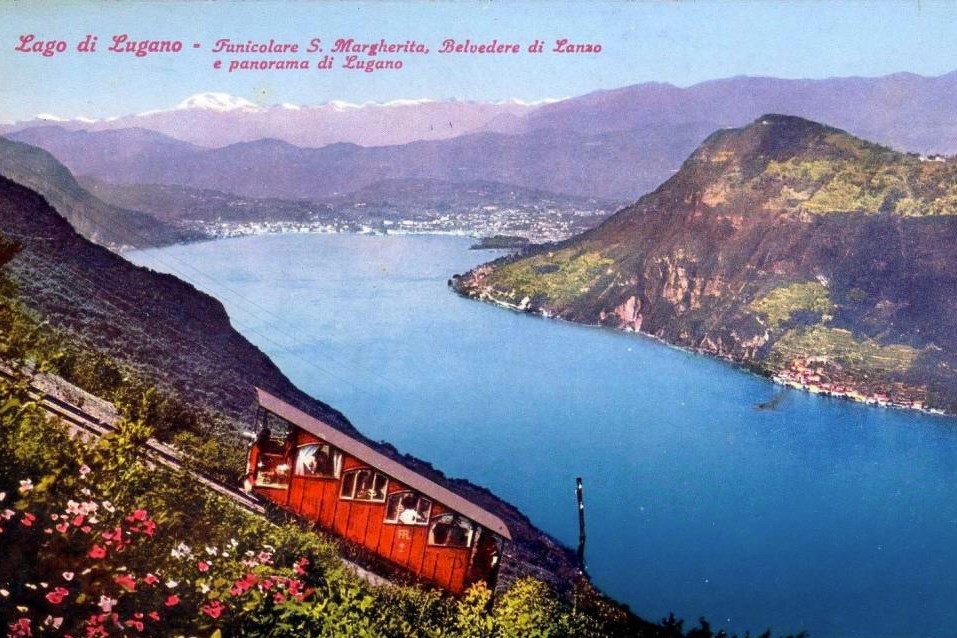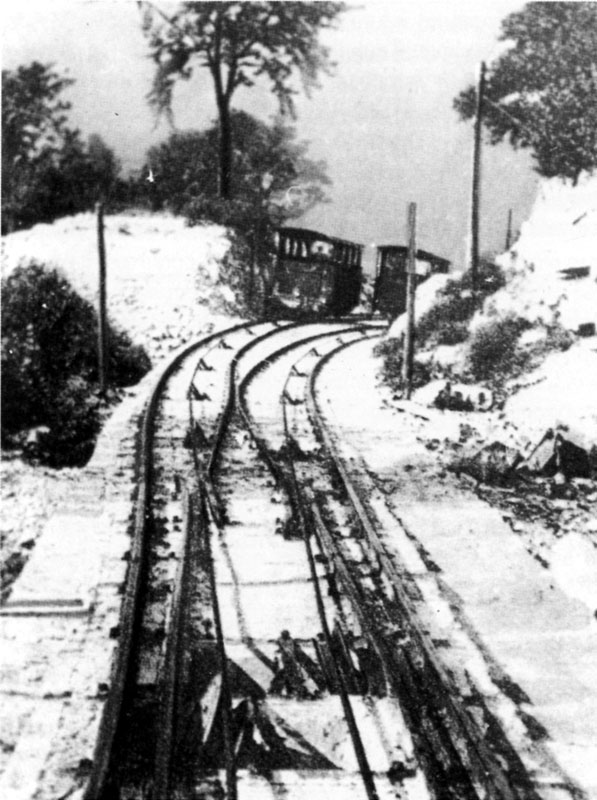THE BLUE FUNICULAR
Exploration #57 (testo italiano a fondo pagina). It is a beautiful day at the end of August. Taking advantage of one of the last days of holidays I decide to visit this funicular, which has been on my map for a long time. Having parked the car and not being in any hurry to visit, I sat down for a coffee at the bar next to the ex-station and I stopped to look at the beautiful view, one of the two most beautiful views in Lombardy. I then understand why, more than a hundred years earlier, in 1902 to be precise, it was decided to build a funicular in this very place.
The funicular was inaugurated a few years later, in 1907, and in just 18 minutes it bridged the 600 metre difference in height from the lake shore below to the beautiful belvedere where there was already a restaurant, exactly where I was standing at the time. At a time when travel was not as easy as it is today, this was a very popular tourist destination, so much so that combined tickets were sold that included a train trip from Milano Centrale, a steamboat trip on the lake and a ride on the funicular up to the belvedere for 10.20 lire on weekdays or 14 lire on holidays. The funicular operated with ups and downs for many years, transporting thousands of tourists until 1977 when the concession expired and it was abandoned.
As soon as I enter the old arrival station I am greeted by carriage number 2, carriage number 1 is obviously at the valley station. The carriage, which had no less than 33 seats divided into 4 compartments, still retains its elegant Art Nouveau style and its beautiful original blue colour. The rest of the building is occupied by the engine room. Unfortunately, the entire traction apparatus is in a state of disrepair, but it still remains a true paradise for lovers of industrial archaeology. In fact, the large winch, all the various mechanisms for transmitting motion, the brakes and the pair of Oerlikon electric motors, each with a power of about 22 kW, which worked one at a time, forming a reserve for each other, are still present.
On the way out I linger a little longer to admire the beautiful view and the usual bartender tells me about the existence of a committee that has been working for some years to restore the old funicular and that finally, after many years of intentions that remained on paper, at the end of 2019 the call for tenders was published for the drafting of the feasibility document for the restoration of the funicular.
Esplorazione #57. E’ una bella giornata di fine Agosto. Approfittando di uno degli ultimi giorni di ferie decido di visitare questa funicolare da tempo presente nella mia mappa. Parcheggiata l’auto e non avendo nessuna fretta nella visita mi siedo per un caffè al bar adiacente alla ex-stazione di arrivo e mi soffermo a osservare il bellissimo panorama, uno due più bei panorami della Lombardia mi rileva il barista. Capisco quindi il perché, più di cento anni prima, precisamente nel 1902, venne deciso di costruire una funicolare proprio in questo luogo.
L’opera fu inaugurata qualche anno più tardi, nel 1907, e permetteva in soli 18 minuti di colmare il dislivello di circa 600 m dalla riva del lago sottostante al bellissimo belvedere dove esisteva già un ristorante, esattamente dove mi trovavo io in quel momento. In un’epoca dove viaggiare non era agile come ai nostri giorni, questa era una meta turistica molto famosa, tanto che erano venduti biglietti cumulativi comprensivi di viaggio in ferrovia da Milano Centrale, gita in piroscafo sul lago e salita in funicolare al belvedere al prezzo di 10,20 lire in un giorno feriale o 14 lire nei festivi. La funicolare operò con alti e bassi per molti anni, trasportando migliaia di turisti fino al 1977 quando, alla scadenza della concessione, cessò l’esercizio e fu abbandonata.
Appena entrato nella vecchia stazione di arrivo mi accoglie la vettura numero 2, la 1 ovviamente si trova alla stazione di valle. La carrozza, che disponeva di ben 33 posti a sedere divisi in 4 scompartimenti conserva ancora la suo elegante stile liberty e il suo bel colore blu originale. Il resto dell’edificio è invece occupato dalla sala macchine. Purtroppo tutto l’apparato di trazione si trova in uno stato di degrado ma rimane ancora un vero paradiso per un amante dell’archeologia industriale. E’ infatti ancora presente il grande argano, tutti i vari meccanismi di trasmissione del moto, i freni e la coppia di motori elettrici Oerlikon della potenza di circa 22 kW ciascuno, che lavoravano uno per volta, costituendo l’uno riserva all’altro.
All’uscita mi soffermo ancora un po’ ad ammirare il bellissimo panorama e il solito barista mi racconta che dell’esistenza di un comitato che da alcuni anni si adopera per ripristinare la vecchia funicolare e che finalmente, dopo molti anni di intenzioni rimaste sulla carta, a fine 2019 è stato pubblicato il bando per la redazione del documento di fattibilità per il ripristino della funicolare.



















